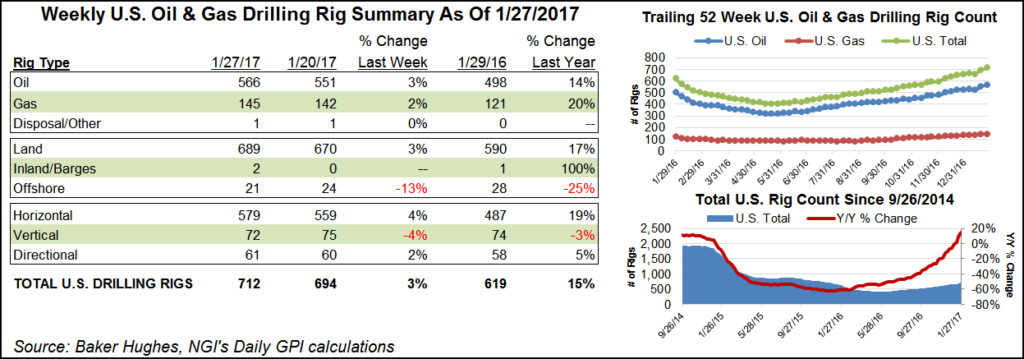Lights Out Again in Fayetteville as Oil Rig Gains Surpass Gas
The dry gas Fayetteville Shale lost its only running rig during the week, according to the latest Baker Hughes Inc. rig count released Friday. But the Barnett Shale held onto its two, and the Haynesville added two more to bring its tally to 31.

But the return of the drillers is still mostly an oil story and mostly one about the Permian Basin.
The Lone Star State’s upstream oil/natural gas industry continued to climb out of the price crash abyss during the week, adding nine rigs to end at 351 active, according to the count for the week ending Jan. 27.
The Permian gained 10 rigs to end at 291, well above its year-ago level of 182. Even the Eagle Ford Shale — which has been out of favor lately — added five rigs, bringing its tally to 54, which is still down 10 from a year ago. Two rigs were running in the Barnett Shale, the same as a week ago. One year ago Texas was running 281 rigs.
It’s the moment the Texas oil and natural gas industry has been waiting for, economist Karr Ingham said in his latest Texas Petro Index report. “It is good news for the industry, for the Texas economy, and for many communities around the state that are strongly connected to the oil and gas exploration and production industry.”
More rigs went up during the week around the country as well. Oklahoma added five, New Mexico gained four, and Louisiana saw the return of two rigs. Three left Colorado, the biggest loser among states for the week.
Overall, 19 U.S. land rigs returned, bringing that count to 689. Two returned to the inland waters, but three left the offshore. The U.S. had a net gain of 18 rigs to end at 712.
Canada added three rigs, after a couple weeks of robust gains, to end at 345 active. The North American count increased by 21 to end at 1,057, well above the 850 rigs running one year ago.
In the United States, 15 oil rigs returned along with three natural gas units. Twenty horizontal rigs came back along with one directional; three verticals left. Canada gained seven oil rigs but lost four gas units.
© 2024 Natural Gas Intelligence. All rights reserved.
ISSN © 1532-1231 |
